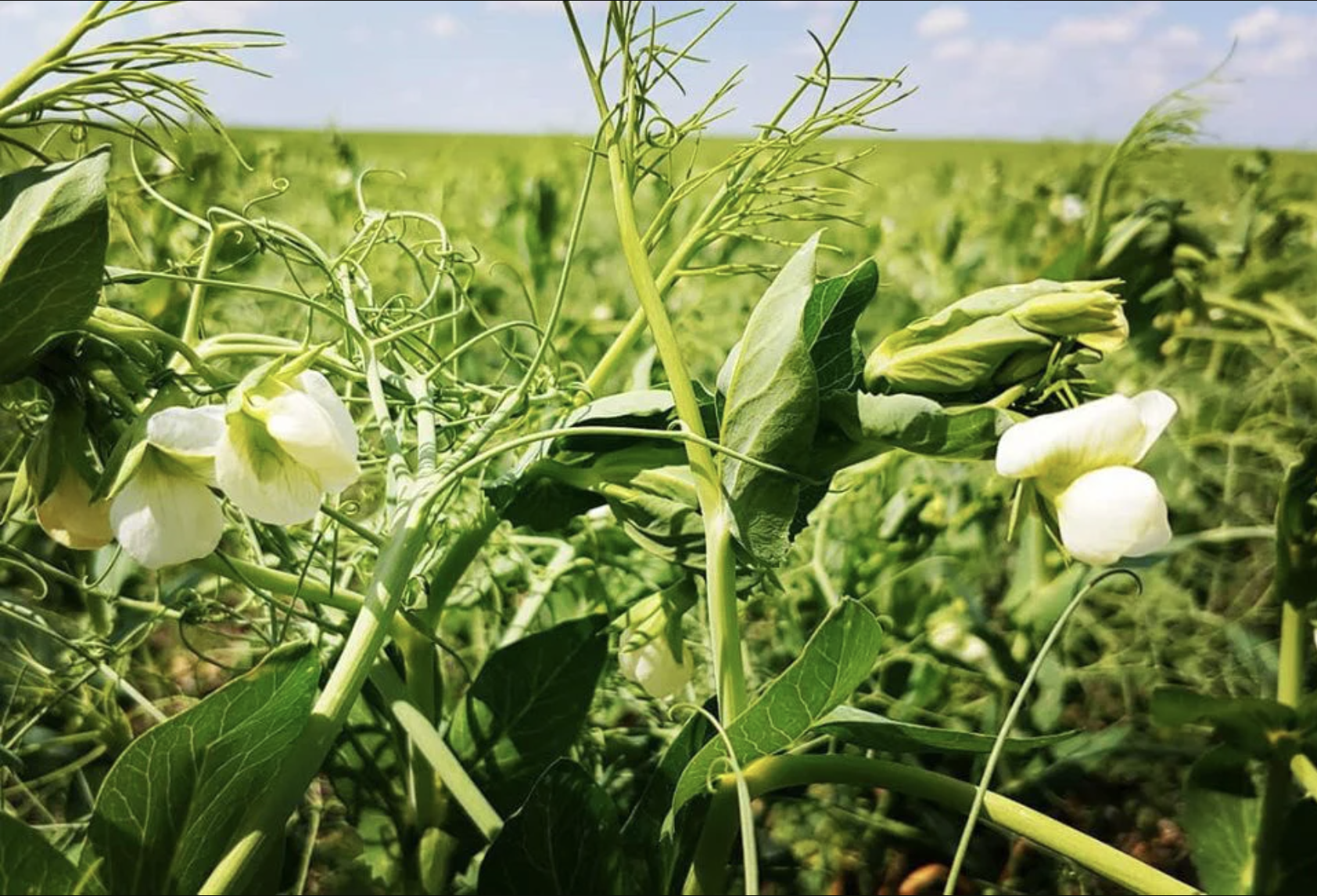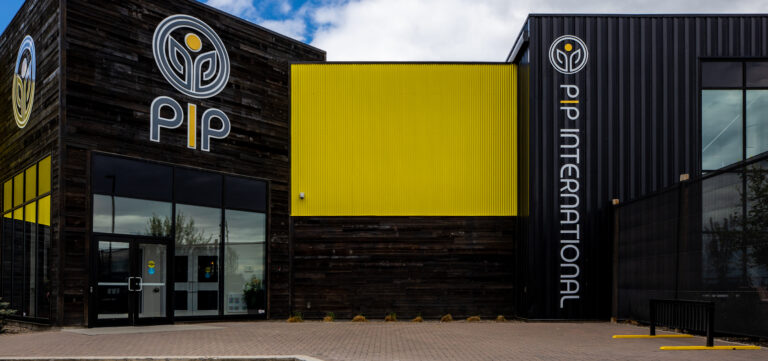https://agupdate.com/farmandranchguide/news
These yellow peas are flowering in mid-July. PPI International contracts with farmers in Canada and North Dakota for yellow peas to make a clean-tasting pea isolate for food products.
PIP International, a company in Alberta, Canada, has created a method of extracting protein from yellow peas that is “gentler” and leaves a clean-tasting, white-colored pea isolate that can be used in food products, according to Christine Lewington, founder and CEO.
“We are commercializing an innovative, new method to get the protein out of the pea without damaging it, so it doesn’t taste bitter and maintains its functional characteristics,” Lewington said.
PIP contracts with farmers in Canada, along with some in North Dakota, for their yellow peas to process into pea isolate.
“PIP offers a very attractive long-term contract with farmers. And with that, we haven’t had problems finding farmers to grow yellow peas for us,” she said.
Lewington admits farmers haven’t always received a good price for peas, and that is the reason many in the Northern Plains and Canada stopped growing peas in the past.
“We’ve had the same problem as the U.S. Peas are not considered a cash crop, but farmers want to rotate with peas because they is so good for the soil and they fix nitrogen,” she said, noting that peas also boost the next crop’s yields and are drought- and pest-resistant.
Lewington does not want to share the company’s proprietary method of extracting pea isolate, but she explained in general how it is different than other companies.
“We use a very gentle process and take the pea and make it into flour, and then we take the flour and mix it in with water,” she said.
The gentle process creates a pea isolate that has a good taste and color.
Some companies in the agriculture industry remove the starch and fiber, which is 75 percent of the pea process, and leave the pea behind in the waste stream.
“They’re taking the protein out of the waste stream. We take our protein out first,” Lewington said.
Some companies may use an isoelectric process, which “shocks the protein to release.”
“We encourage them in a gentle environment to release from their friends, the starch and fiber, but we focus on the protein,” she said. “We make a really clean-tasting, white-colored pea protein that is functional.”
The starch and fiber byproducts are also being used in a sustainable way. They made an agreement with a U.S. company to use the byproducts for plant-based food packaging.
“We’re taking our starch and fiber off our wet processing line and directing it into a new process. We don’t need to separate, dry, and package it. This will save us a lot of money from the energy savings alone,” Lewington said.
Lewington said other companies often add ingredients to mask the taste of the protein they’ve extracted in a non-gentle way.
“They will put in masking ingredients, or they’ll use mushroom protein to trick your taste buds. Then, you can’t taste the bitterness,” she said.
PPI International purchased 20 acres of land and built the largest pea processing facility in the world. They plan to take pea processing in steps, and within the next 18 months, they plan to market hundreds of metric tons of pea protein isolate to food processing companies.
“We built a pilot demonstration facility, so that is the first step,” she said.
Lewington said they have a food manufacturer/client that is reformulating its product using PIP International’s pea protein isolate.
“They can remove four ingredients from their product just because they don’t need to add a cellulose ingredient. They don’t need to add a masking ingredient to mask the taste. It also allows for a stronger shelf life,” she said. “Because our protein is so functional, it lasts, it’s stable, it will gel, it will bind, it will foam and do whatever they want it to do.”
Lewington said the discovery of the process to extract pea protein will not only revolutionize food products, but it will provide more revenue for farmers growing yellow peas.
“When we issue our pea contracts, we’re going to put in $175 million directly to the farmers,” she said.
Another step that is on tap for the future is to share their energy technology with other companies.
“We want to be a game-changer in the industry because reprocessing is very harsh on the industry and overprocessing uses a lot of power, gas, and water. And our process significantly reduces those,” she said. “We’ll be sharing our water, power, and thermal demand technologies, which are carbon negative. Many of our technologies that save energy could be used in different food systems in facilities.”





